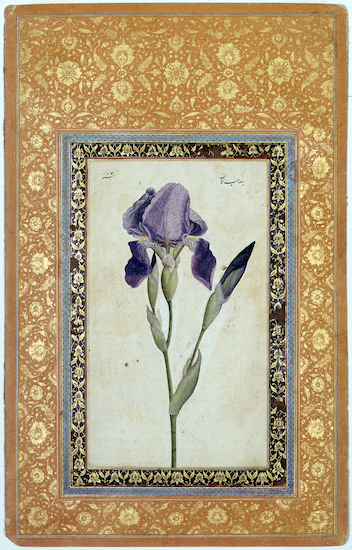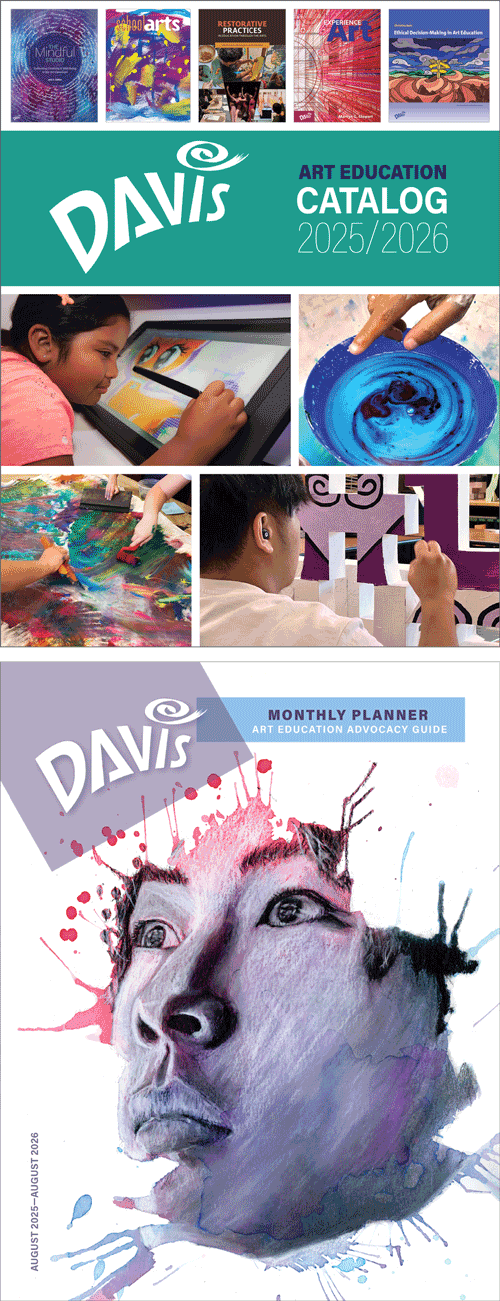National Iris Day: Muhammad Zaman
The iris is a beautiful flower that was first planted in the United States in Virginia in the 1600s. The flower started being commercially imported around 1869. The iris is the symbol for the city of Brussels, Belgium, and the state flower of Tennessee since 1987. The American Iris Society was founded in 1927, and the first official National Iris Day was 2018. The iris is a particularly popular subject in Middle Eastern and Far Eastern art.
National Iris Day, 8 May: Art by Muhammad Zaman (active 1649–1704, Iran)
Muhammad Zaman was a Persian (Iranian) artist of the Safavid period who studied Western art masterpieces in Rome.
 |
| Muhammad Zaman, Blue Iris, 1663–1664. Opaque watercolor on paper, 33.2 x 21.3 cm. © 2025 Brooklyn Museum. (BMA-982) |
Zaman was sent to Rome during the 1650s by the Safavid court, where he studied Renaissance and Baroque painting. This painting of an iris is clearly influenced by European botanical studies. It also shows an emphasis on plasticity (sculptural form) and realism rare in previous Iranian painting. Zaman has kept the traditional decorative border seen in many Iranian book illustrations. It is possible this was one of a group of flower studies that would have been commissioned to form an album.
In Iran, the tradition of calligraphy and book decoration was perhaps the most well-established art form, having begun in the 600s CE with copying the Qur'an in beautiful scripts embellished with gold. The Safavids had flourished in their native Azerbaijan since the 1300s. When the Timurid dynasty declined during the 1400s, the Safavids gradually gained land and power in much of Iran.
The Safavids captured Tabriz from the Turks in 1501. This is the beginning of the Safavid Dynasty. The Safavids established Shia as the state religion of Iran. The economy of Iran flourished under the Safavids because of Iran’s position between burgeoning kingdoms in Europe, and India and China in the east. The Silk Road ran through northern Iran at the time.
Under the Safavid rulers, art, architecture and literature flourished. The Safavids were great patrons of the arts. Bookarts in particular flourished during the 1500s. Because of contact with European traders, the influence of European illuminated manuscript greatly impacted the Iranian art form. Safavid book illustration eventually influenced that of Ottoman (Turk) and Mughal (India).
In addition to fighting with its perennial enemy, the Ottomans, Iran in the 1600s had to contend with a rising new power of Russia. In the east, Mughal India had taken over control of Afghanistan from Iran. Although the Safavids declined politically during the 1600s, they continued to be great patrons of the arts. The 1600s was a period of greater influence of western European art in Safavid painting. This came about because of increased contact with European traders, an influx of European artists to the Safavid court, and the encouragement of Safavid rulers. Shah Abbas II (died 1666) sent several artists to Italy to study European painting. This coincided with the decline in interest in expensive-to-make illustrated books and the desire for new painting formats by Iranian artists.

Comments